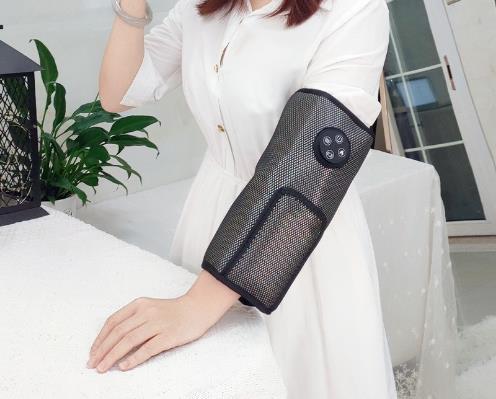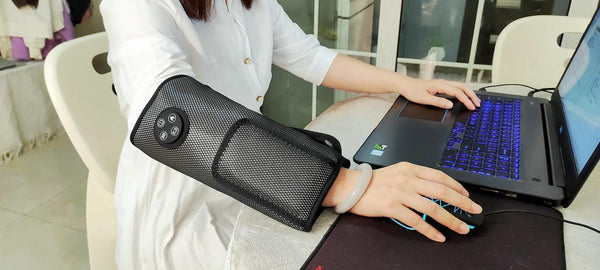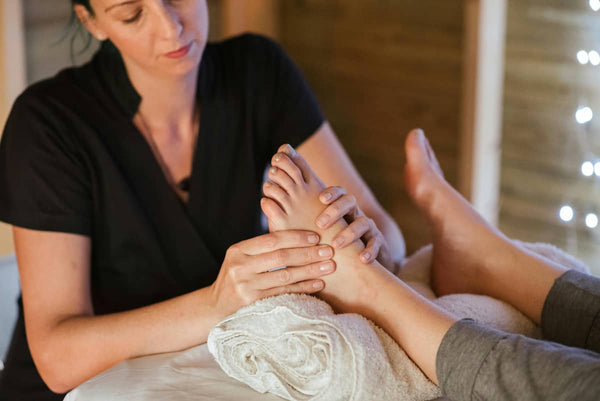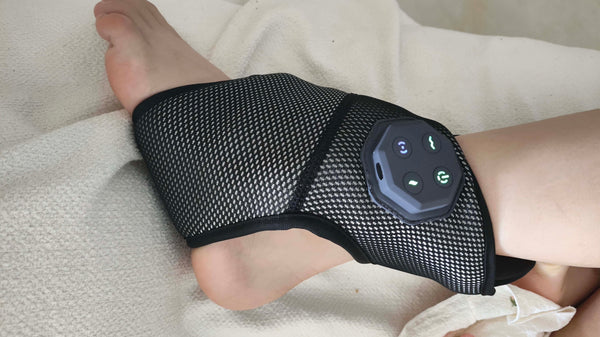 The rise in popularity of the body massage machine, particularly percussive massagers or "massage guns," has been quite remarkable, especially within the sports rehabilitation community. Athletes and active individuals often turn to these devices for muscle recovery, hoping to alleviate soreness and improve flexibility. But a critical question often arises: can these powerful tools inadvertently cause damage, specifically to the substantial muscles of the buttocks like the gluteus maximus and the crucial gluteus medius? This is a really, really important question to consider for long-term health.
The rise in popularity of the body massage machine, particularly percussive massagers or "massage guns," has been quite remarkable, especially within the sports rehabilitation community. Athletes and active individuals often turn to these devices for muscle recovery, hoping to alleviate soreness and improve flexibility. But a critical question often arises: can these powerful tools inadvertently cause damage, specifically to the substantial muscles of the buttocks like the gluteus maximus and the crucial gluteus medius? This is a really, really important question to consider for long-term health.
This article delves into the potential risks and benefits associated with using a body massage machine on your glutes. We'll explore how they work, proper usage techniques to maximize benefits while minimizing harm, situations where caution is paramount (especially concerning pre-existing conditions), and alternative approaches for those who might find percussive therapy too intense. Our aim is to equip you with the knowledge to make informed decisions for your glute health and overall well-being, ensuring your recovery tools are allies, not adversaries. Understanding these nuances is key before incorporating any new modality into your routine.
What is a Percussive Body Massage Machine and How Does it Target Glute Muscles?
A percussive body massage machine, commonly known as a massage gun, delivers rapid, concentrated pulses deep into muscle tissue. This form of therapy, often termed "percussive therapy" or "vibration therapy," is designed to mimic the effects of tapotement or percussion massage techniques used by manual therapists. When applied to the gluteal muscles – a powerful group including the gluteus maximus, medius, and minimus – this action aims to break up fascial adhesions, stimulate blood flow, and reduce neuromuscular tension. Think of it as a targeted, high-frequency "wake-up call" for your muscles.
The interaction with dense gluteal tissue can be profound. For individuals in sports rehabilitation, this can translate to quicker recovery from exercise-induced muscle soreness and improved mobility in the hips and lower back. However, it's precisely this power that necessitates caution. While stimulating circulation and releasing tight spots are beneficial, excessive force or improper application over sensitive areas can, indeed, lead to issues like bruising or muscle strains. It’s not just about pummeling the muscle; it's about encouraging a therapeutic response. The glutes are robust, but they are not invincible, and understanding this balance is crucial for safe and effective use of any body massage machine.
- Increased Blood Flow: Enhances oxygen and nutrient delivery to tissues.
- Myofascial Release: Helps to loosen tight connective tissue surrounding muscles.
- Reduced Muscle Soreness (DOMS): Can alleviate post-exercise discomfort.
- Improved Range of Motion: When used correctly, can help increase flexibility.
The Science of Safety: Core Principles for Using a Body Massage Machine on Glutes
Understanding how a body massage machine interacts with your body is fundamental to using it safely, particularly on an area as complex and vital as the glutes. Firstly, not all muscle tissue responds identically. While the glutes are large and powerful, they are also intersected by and lie near crucial structures like bony prominences (e.g., the sacrum, iliac crest, greater trochanter) and significant nerve pathways, most notably the sciatic nerve. Applying intense percussive force directly over these areas can be counterproductive, potentially leading to irritation or even injury. From a holistic viewpoint, the goal is to restore balance, not to shock the system into submission.
Secondly, the "dose-response" relationship is paramount. Just as with medication or exercise, the effectiveness and safety of percussive therapy depend on the "dose" – which encompasses intensity, duration, and frequency of application. There's a therapeutic window; too little may not yield benefits, while too much can overwhelm the tissue's capacity to adapt and recover. This can manifest as micro-trauma, inflammation, or increased pain. The body is an intelligent system, and it’s designed to heal and adapt, but aggressive, prolonged use of a body massage machine can push it beyond its adaptive capabilities.
Finally, and perhaps most importantly, is the principle of "listening to your body." Proprioception, your body's awareness of its position and movement, and its pain signals are vital guides. There's a distinct difference between the therapeutic discomfort of releasing a tight knot and the sharp, radiating pain that signals potential harm. Ignoring these signals in pursuit of a "no pain, no gain" philosophy is a common pitfall that can turn a helpful tool into a source of injury. Developing this body awareness is a cornerstone of effective self-care and rehabilitation.
- Avoid Bony Areas: Steer clear of direct application on the sacrum, iliac crest, coccyx, and greater trochanter.
- Mind Major Nerves: Be especially cautious around the sciatic notch (deep in the buttock, where the sciatic nerve emerges).
- Start Low and Slow: Begin with the lowest intensity setting and a shorter duration, gradually increasing as tolerated.
- Contraindications: Never use on acute injuries, active inflammation, open wounds, or areas with impaired sensation without professional guidance.
Mastering Technique: How to Properly Use a Body Massage Machine on Your Buttocks for Optimal Results and Safety
 For those in sports rehabilitation, using a body massage machine correctly on the buttocks can significantly aid recovery and performance. Begin with a brief warm-up; light activity like walking or dynamic stretching prepares the gluteal muscles for treatment, making them more receptive. Next, select an appropriate attachment head. Generally, larger, softer, or rounded heads are preferable for covering the broad expanse of the gluteus maximus, while a more targeted (but still cushioned) head might be used with extreme care on specific trigger points in the gluteus medius, avoiding bony landmarks.
For those in sports rehabilitation, using a body massage machine correctly on the buttocks can significantly aid recovery and performance. Begin with a brief warm-up; light activity like walking or dynamic stretching prepares the gluteal muscles for treatment, making them more receptive. Next, select an appropriate attachment head. Generally, larger, softer, or rounded heads are preferable for covering the broad expanse of the gluteus maximus, while a more targeted (but still cushioned) head might be used with extreme care on specific trigger points in the gluteus medius, avoiding bony landmarks.
The application itself should involve a gentle, gliding motion. Keep the body massage machine moving across the muscle belly; avoid pressing down with excessive force or lingering on a single spot for too long, especially if it's highly sensitive or near a bony prominence. Aim to cover the gluteus maximus thoroughly, and if addressing the gluteus medius (located more on the side of the hip), be particularly mindful of the underlying structures like the greater trochanter. The duration for a large muscle group like the glutes should typically be around 2-5 minutes in total, with specific tight spots receiving focused attention for no more than 30-60 seconds. You might be surprised to find out that less can often be more.
In a sports rehabilitation context, a body massage machine can be used pre-workout for a short duration (30 seconds to 1 minute per muscle group) at a lighter pressure to help activate muscles and increase blood flow. Post-workout, it can be used for a longer duration (1-2 minutes per muscle group) with moderate pressure to aid recovery, reduce soreness (DOMS), and address any tightness identified during activity or assessment. Remember, the goal is therapeutic, not aggressive.
- Step 1: Warm-up: Perform light aerobic activity or dynamic stretches to prepare the gluteal muscles.
- Step 2: Choose the Right Attachment: Use larger, softer heads for broad areas; smaller, more precise (but still cushioned) heads for specific trigger points, used with caution.
- Step 3: Gentle Gliding Motion: Keep the body massage machine moving smoothly over the muscle. Do not apply excessive downward pressure. "Float" the device over the muscle.
- Step 4: Target Specific Glute Muscles: Address the gluteus maximus (the main bulk of the buttock) and, carefully, the gluteus medius (upper, outer part of the buttock, crucial for hip stability). Avoid direct pressure on bony areas or nerve pathways.
- Step 5: Cool Down/Stretch: After using the massage gun, gentle stretching can further enhance flexibility and relaxation.
Benefits vs. Risks: Is a Body Massage Machine a Boon or Bane for Glute Therapy?
When employed correctly, a body massage machine can indeed be a significant boon for individuals seeking body massage machine for glute therapy. The targeted percussive action can provide substantial relief from muscle tightness and soreness, particularly beneficial after strenuous workouts or for those dealing with chronic tension patterns common in sports. It can help improve flexibility and range of motion in the hips, which is crucial for athletic performance and everyday movement. Furthermore, a massage gun can be an effective tool for addressing specific trigger points within the gluteus medius or piriformis muscles, which are often implicated in hip and lower back pain, contributing positively to **body machine for glute pain relief**.
However, the potential for it to become a bane arises entirely from improper use, leading to legitimate safety concerns on buttocks. If the intensity is too high, the duration on one spot too long, or if it's used over contraindicated areas, bruising is a common, albeit usually minor, consequence. More seriously, aggressive application, especially on cold or unprepared muscles, can lead to muscle strains or micro-tears. There's also the risk of nerve irritation, particularly if the device is used with excessive pressure near the sciatic nerve or other superficial nerves in the gluteal region. If an underlying inflammatory condition or acute injury is present, a massage gun can certainly aggravate it, delaying healing. It's a tool, and like any tool, its utility depends on the skill and knowledge of the user.
| Potential Benefit (When Used Correctly) | Potential Risk (If Misused) |
|---|---|
| Relief from muscle tightness and soreness | Bruising, muscle strains, or micro-tears |
| Improved flexibility and hip range of motion | Nerve irritation (e.g., sciatic nerve) |
| Enhanced recovery post-exercise/rehabilitation | Aggravation of existing inflammation or acute injuries |
| Targeted trigger point release | Increased pain or discomfort if applied too aggressively |
Pre-existing Conditions and Massage Guns: When Your Glutes Need Extra Caution
The presence of pre-existing conditions significantly alters the risk-benefit equation for using a body massage machine on the glutes. This is where a one-size-fits-all approach definitively fails, and personalized assessment, a cornerstone of my physiotherapy practice, becomes critical. For individuals in sports rehabilitation, being aware of contraindications and precautions is non-negotiable to prevent exacerbating an existing issue or causing new harm. Simply put, what works for a healthy muscle might be detrimental to one that's already compromised.
Conditions such as acute muscle strains or tears in the glutes, active bursitis (like trochanteric bursitis which is near the gluteus medius insertion), or inflammatory conditions like an acute flare-up of piriformis syndrome or sciatica with significant nerve inflammation, generally contraindicate the direct use of a high-intensity percussive massager. The aggressive mechanical force can worsen inflammation and delay healing. Similarly, individuals with vascular issues such as deep vein thrombosis (DVT), those on blood-thinning medications (due to increased risk of severe bruising or hematoma), or those with recent surgery in the hip or gluteal area should avoid or use a body massage machine only under strict guidance from their healthcare professional. Even conditions like osteoporosis might warrant caution due to the proximity of bony structures.
Therefore, the golden rule is: when in doubt, consult. A physiotherapist, sports physician, or your general practitioner can provide tailored advice based on your specific condition. A body massage machine is intended to be a supportive tool within a broader recovery or wellness strategy, not a standalone cure, and certainly not something to be used indiscriminately when underlying health concerns are present. While specific statistical data on injury rates from massage guns in these populations is still emerging, clinical experience strongly suggests a cautious approach is warranted.
- Sharp, shooting, or radiating pain: This could indicate nerve irritation.
- Numbness or tingling: Another sign of potential nerve involvement.
- Increased swelling or inflammation: The massager might be aggravating the condition.
- Pain that worsens or doesn't improve after use: The technique or tool may not be appropriate.
- Appearance of significant bruising: Pressure may be too high, or there might be an underlying sensitivity.
Body Massage Machine Intensity and Duration: Finding the Sweet Spot for Buttocks Health
Navigating the intensity and duration settings on a body massage machine is crucial for ensuring it benefits, rather than harms, your gluteal muscles. The temptation to adopt a "more is better" or "no pain, no gain" philosophy can be strong, especially in a sports context, but this is often where problems begin. Optimal intensity is highly individual. You should aim for a sensation of deep pressure, perhaps a mild, tolerable discomfort if working over a trigger point, but never outright or sharp pain. The goal is to encourage tissue relaxation and blood flow, not to "punish" the muscle into submission. Starting with the lowest setting and gradually increasing only if comfortable is always the wisest approach.
Regarding duration, prolonged application on a single spot or muscle group doesn't necessarily yield superior results and significantly increases the risk of bruising, irritation, or even rhabdomyolysis in extreme, though rare, cases. As a general guideline for large muscle groups like the glutes, a total of 1-2 minutes per side is often sufficient for general purposes. If you're focusing on specific, stubborn trigger points, limit the direct application to 30-60 seconds on that spot before moving on. Overdoing it can create more inflammation than it resolves. It's about coaxing the muscle to relax, not forcing it.
Frequency of use also plays a role. While daily use at a very low intensity for a brief period might be acceptable for some individuals for general wellness, those using a body massage machine for more intensive post-workout recovery or to address significant tightness might find that every other day, or just after strenuous activities, allows tissues adequate time to respond and adapt. From a holistic perspective, the body needs periods of rest and recovery to integrate the therapeutic input. Constantly bombarding tissues without allowing this adaptive phase can be counterproductive. True health in the muscles comes from a balance of stimulus and recovery.
- Individual Pain Tolerance: What's therapeutic for one might be painful for another.
- Muscle Size and Density: Larger, denser muscles might tolerate slightly more, but caution is still key.
- Specific Goal: A pre-activity warm-up requires less intensity/duration than post-activity recovery.
- Type of Massage Gun and Attachments: Different guns and heads deliver force differently.
- Tissue Feedback: Pay close attention to how your muscles feel during and after use.
Beyond the Gun: Exploring Alternatives like KLCOSY Massagers for Gentle Glute Care
While percussive massage guns are popular, it's important to acknowledge that they are not universally suitable. The potent, deep percussive force, even on lower settings, can be too intense for some individuals. This is particularly true for older adults, those with heightened pain sensitivity, certain chronic pain conditions, or anyone who simply prefers a gentler approach to muscle care. This is where considering **affordable options like KLCOSY** or other types of **body massage machine**s becomes relevant, as they might offer a different, more soothing experience for **body machine for glute pain relief**.
Milder alternatives to high-impact massage guns include vibrating foam rollers, which combine myofascial release with gentler vibration; orbital massagers, which use a circular motion that can be less jarring; and heat therapy massagers, which incorporate warmth to soothe and relax muscles. Products like the **KLCOSY Massager** (if it aligns with these gentler modalities, as suggested by the keywords) could represent a category of devices designed for users who find traditional massage guns overwhelming. These alternatives often focus on promoting relaxation and circulation without the deep, sometimes aggressive, impact of percussive therapy. When considering a **massage gun vs full body machine for hips**, a full-body machine might offer broader, less intense coverage that some users prefer.
Choosing an alternative makes sense if you consistently find massage guns uncomfortable even at low settings, if you have conditions where deep percussion is contraindicated but gentle massage is permissible, or if your primary goal is relaxation rather than deep tissue work. For instance, an elderly individual seeking relief from general gluteal stiffness might find a heated, kneading massager far more beneficial and pleasant than a percussive gun. The best **body massage machine** is always the one that suits your individual needs, preferences, and physiological state, ensuring therapy remains a positive and healing experience.
- Intensity: High (Massage Gun) vs. Low-to-Moderate (e.g., **KLCOSY Massager**, vibrating rollers).
- Mechanism: Deep Percussion (Gun) vs. Vibration, Kneading, Heat, Orbital Motion (Alternatives).
- Best For: Deep tissue release, athletic recovery (Gun) vs. General relaxation, sensitive users, broader application (Alternatives).
- User Experience: Can be intense (Gun) vs. Generally more soothing and relaxing (Alternatives).
In conclusion, a body massage machine, particularly a percussive massage gun, can be a highly effective tool for improving glute health, aiding in sports rehabilitation, and providing relief from muscle soreness when used with knowledge and care. The potential for benefit is significant. However, the risk of causing damage, such as bruising, muscle strain, or nerve irritation in the buttocks and gluteus medius region, is very real if the device is used improperly—with excessive force, for too long, or on contraindicated areas or conditions. Understanding proper techniques for your body massage machine for glute therapy is absolutely key.
The decision to use a body massage machine should be an informed one, weighing its powerful capabilities against your individual needs, sensitivities, and any pre-existing health conditions. Always prioritize safety: start with low intensity, keep the device moving, avoid bony prominences and major nerve pathways, and, most importantly, listen to your body's signals. If you experience pain or discomfort that feels wrong, stop. For those with specific health concerns or engaged in intensive sports rehabilitation, consulting with a physiotherapist or medical professional before incorporating a massage gun into your routine is always the most prudent course of action. Ultimately, the goal is to support your body's health and recovery, and a well-chosen, correctly used body massage machine can be a valuable part of that journey.
Frequently Asked Questions about Body Massage Machines and Glute Health
Q1: How does a body massage machine affect gluteus medius health?
A: When used correctly, a body massage machine can positively affect gluteus medius health by helping to release tension, improve local blood flow, and reduce pain or trigger points in this key hip-stabilizing muscle. It can be particularly beneficial for athletes or individuals experiencing tightness from overuse. However, the gluteus medius can also be quite sensitive, especially if underlying issues like tendinopathy or bursitis near its attachments are present. Improper use—such as applying too much pressure directly over the muscle when it's inflamed, holding the device too long on one spot, or hitting nearby bony prominences (like the greater trochanter)—can aggravate these conditions or cause new irritation. The best approach is to use moderate pressure on the fleshy part of the muscle, keep the massager moving, and avoid use if there's acute pain or known inflammation in the area. Always start gently to assess tolerance.
Q2: What features reduce injury risk on buttocks when using a body massage machine?
A: Several features can help reduce the risk of injury when using a body massage machine on the buttocks:
- Multiple Speed/Intensity Settings: This is crucial. Always start on the lowest setting to assess tissue tolerance before considering an increase. This allows you to customize the force to your comfort level and the specific needs of the gluteal muscles.
- Variety of Head Attachments: Softer, larger, and more cushioned head attachments (like a large ball or a dampener head) are generally safer and more comfortable for broad, fleshy areas like the glutes, distributing the percussive force more evenly. Avoid very hard, pointed attachments unless specifically guided by a professional for a very precise trigger point.
- Ergonomic Design: A good ergonomic design allows for better control and easier reach, reducing the likelihood of applying pressure at awkward or incorrect angles, which could inadvertently direct force onto sensitive structures.
- Stall Force Indication (or appropriate stall force): Some devices are designed to stall (stop) if too much pressure is applied, which can be a built-in safety feature preventing excessive force.
- Clear User Instructions and Warnings: Reputable brands provide detailed guidance on safe usage zones, areas to avoid (like bony prominences and major nerves), and recommended durations.
Q3: Are body massage machines safe for daily glute use?
A: The safety of daily glute use of a body massage machine depends heavily on intensity, duration, individual factors, and the reason for use. For general wellness, promoting circulation, or managing very mild, non-painful tightness, daily use at a low intensity for a short duration (e.g., 1-3 minutes per glute) might be acceptable for many individuals, provided it causes no soreness or adverse effects. However, if you are using the massage gun for more intensive recovery after strenuous workouts or to address significant muscle soreness or deep trigger points, daily intense use is generally not recommended. Muscles need time to recover and adapt to the mechanical stress of percussive therapy. Daily aggressive use could potentially lead to over-stimulation, increased inflammation, or prevent the natural healing processes. Listening to your body is paramount: if you notice increased soreness, bruising, or any negative reactions, reduce the frequency or intensity, or take a break. If you're using it to manage persistent pain, daily use might mask an underlying issue that needs professional assessment rather than just symptomatic relief with a body massage machine.
References
While this article draws upon general physiotherapy principles and widely understood mechanics of percussive therapy devices, specific peer-reviewed studies on the precise injury rates or long-term effects of various massage gun usage protocols on the gluteal muscles are still an emerging area of research. Information on safe usage is often derived from manufacturer guidelines, clinical experience of physiotherapists, and extrapolation from studies on manual massage and vibration therapy.
Users are encouraged to consult manufacturer's instructions for their specific body massage machine and seek advice from healthcare professionals for personalized guidance, especially if they have pre-existing conditions or are undergoing sports rehabilitation.
This reply is generated based on currently verifiable public information and general physiotherapy principles. The information provided is for general informational purposes only, and does not constitute medical advice. It is recommended to cross-check key content with authoritative sources and consult with a qualified healthcare professional for any health concerns or before making any decisions related to your health or treatment, including the use of a body massage machine.




0 comments